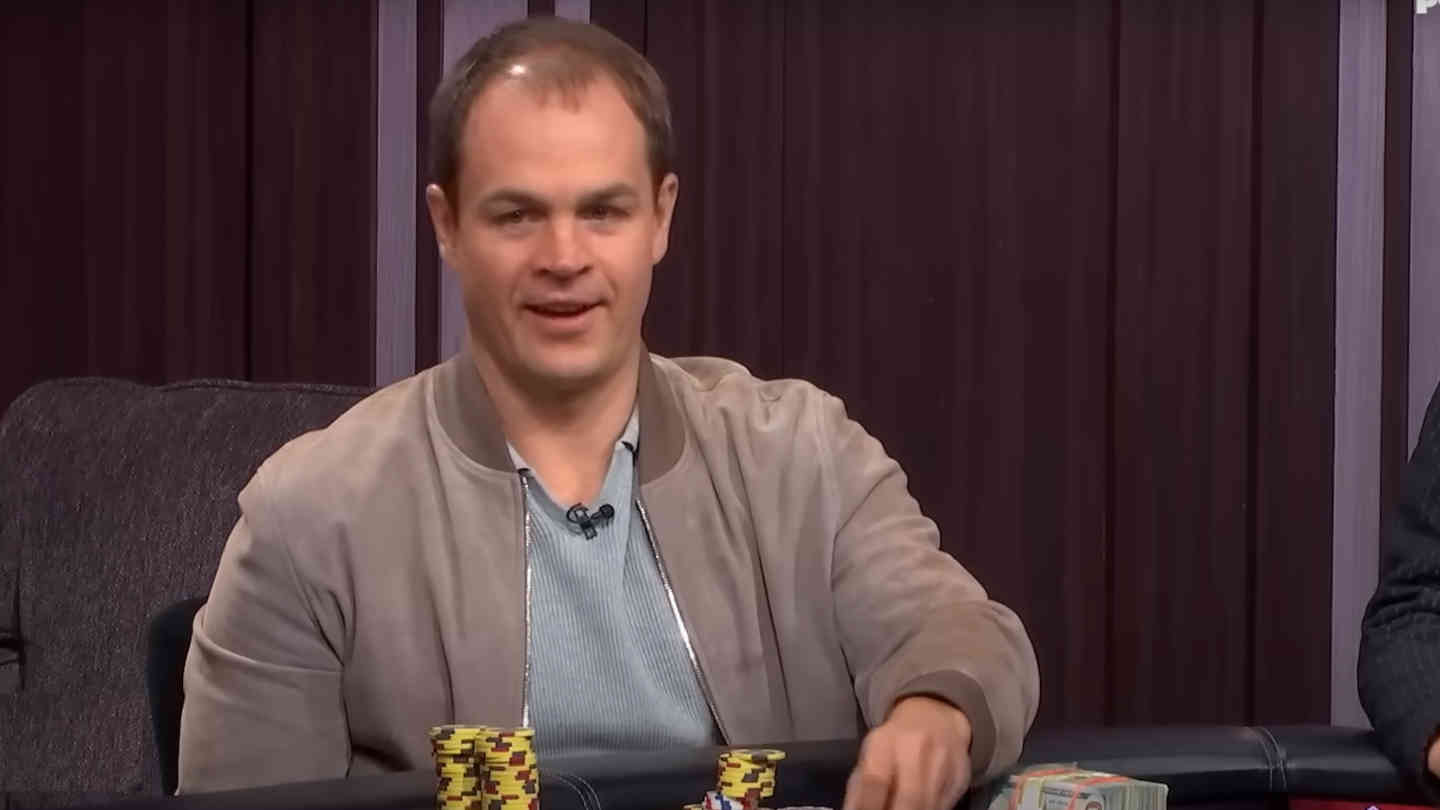PLO Poker Rules – How To Win In Pot Limit Omaha Game
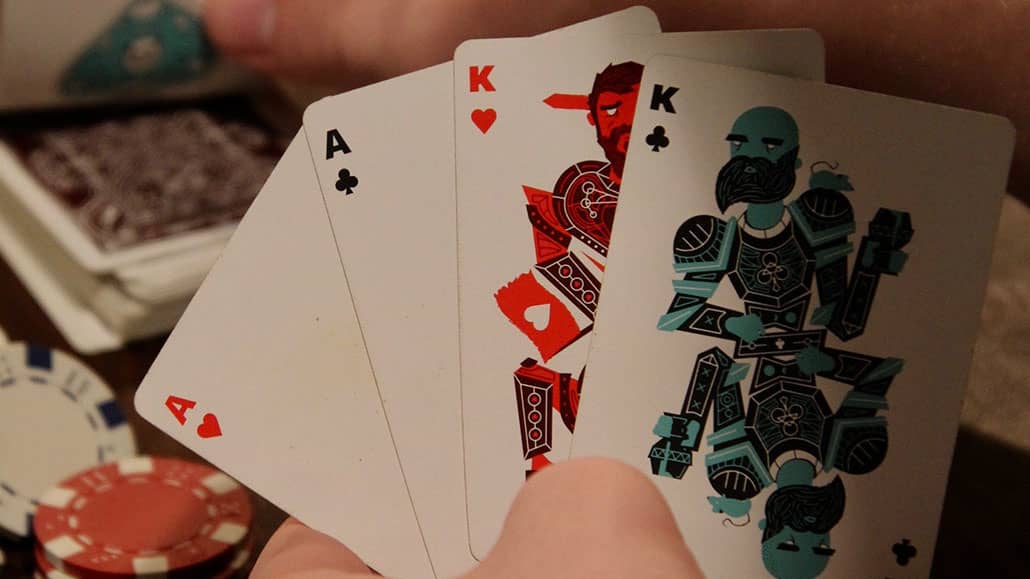
Although Texas Hold’em is often referred to as the “Cadillac of Poker,” it’s just one of many poker variations in existence today.
While most other games are far behind the leader, PLO poker is catching up and offers a more exciting alternative for players looking for action.
Pot Limit Omaha is definitely the second most popular poker game in the world and has stood the test of time, unlike stud or other variants that recently lost a lot of momentum.
PLO poker game is similar to Hold’em in many of its aspects, which makes it an ideal candidate for those looking for new options but not wanting to learn everything from scratch. At the same time, it differs from NLHE in many aspects and offers a lot more action.
If you’d like to give this game a try but don’t know where to start, this article should be an excellent resource.
From Omaha poker rules and basic explanations on how to play Omaha to some more advanced strategies, it will teach you all you need to know to get started.
Of course, this Pot Limit Omaha guide won’t make you an expert overnight, but it will teach you how to play Omaha and some of the essential concepts of this game. Once you get the basics down, you can figure out if this is the game you like and if you want to spend more time learning about it.
Pot Limit Omaha Poker Rules
To start at the very beginning, let’s quickly go through Omaha poker rules. Since the game is similar to Hold’em in many aspects, many players jump straight into it without fully understanding the rules of Omaha poker.
Here’s the breakdown of the most important things you need to know about PLO:
- The game is played with four hole cards instead of two
- Players must always use exactly two of their hole cards to make a hand (unlike NLHE where you can use one or even none)
- Omaha is played in pot-limit format, which means the size of the pot determines the maximum size of the bet
- PLO uses the same poker hand rankings as No-Limit Texas Hold’em
I won’t go into too much detail about the basic rules as they are the same as in Hold’em, i.e:
- The game is played with the small and the big blind
- It’s a community card game with the flop, turn, and river
- The best hand at the showdown wins the pot; in the event of a tie, the pot is split equally among the players
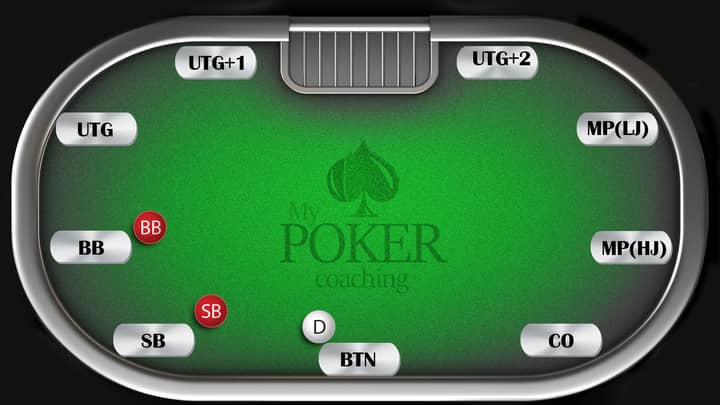
To start the game, players place their blinds, then everyone receives four cards, and the preflop action begins with the player sitting in the UTG poker position.
On the flop and all later streets, the action starts with the small blind or the first still-active player to their left, just like in a standard Texas Holdem game.
Specific Omaha Rules You Need to Know
At first glance, Pot Limit Omaha is quite similar to Hold’em, which leads many new players to start playing without understanding all the nuances. Most of the time, they learn a pricey lesson because of this practice.
Although PLO poker and Texas Holdem look similar, there are some crucial differences between the rules.
The first and most significant one is that you have to use precisely two cards from your hand, and players are often confused about this.
This is best explained by some examples.
Let’s say the board runs out: Ah Kh Jh Qs 5h
In Hold’em, any heart in your hand would give you a flush, and any Ten would make you a straight.
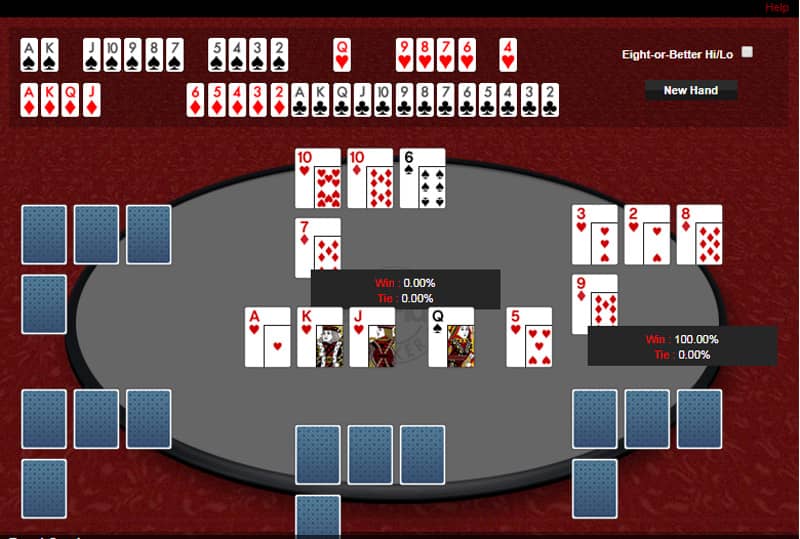
In PLO, however, if you have a hand like 10h 10d 6s 7d, your best hand is just a pair of Tens! This is because:
- You can’t use only one card to make a straight, so your “10” doesn’t help (you’d need to have another straight-making card like an A, a 9, or any picture card to go along your Ten)
- You can’t use a single card to make a flush, so the 10h is irrelevant in that context. You need another heart in your hand to make a flush.
This is one of the most common PLO mistakes that new players make. They’ll think they have a flush when they only have a single card of the relevant suit or will claim a straight with just one card.
It takes some time to get used to this, but it’s vital to understand this ruling before sitting down to play poker.
If you’re having problems with this particular part, take some time and play online poker play money games. It’s the best way to learn through practice while not risking any actual cash in the process.
Betting in Pot-Limit Omaha Poker
Another difference between NLHE and PLO poker has to do with betting. In No-Limit Hold’em, you can bet any amount between one big blind and your entire stack whenever it’s your turn to act.
In Pot Limit Omaha, as the name suggests, things are somewhat different.
The maximum size of the bet or the raise, though, is limited by the size of the pot.
Admittedly, this can be a bit confusing and takes some time to learn. Here’s a quick breakdown of betting rules:
- If you’re first to bet, you can bet up to the size of the pot, i.e., if there is $100 in the pot, you can bet the maximum of $100
- If there is a bet in front of you, the maximum raise is the size of the pot (all bets on the table), including your call.
For example, there is $100 in the pot, and a player in front of you bets $50, so the maximum you can bet is $250.
You first call the $50 bet, bringing the total size of the pot to $200, and then add the amount you called ($50), making it a total of $250.
While it could sound complicated at the beginning, you will quickly get hold of this method or can simply ask the dealer if you are not sure.
Luckily, online PLO players won’t have to deal with this too much as the size of the pot and the maximum bet size is calculated automatically.
Best PLO Omaha Starting Hands
Understanding PLO poker rules is an essential step in learning how to play Omaha, but it’s just the beginning. While you may feel ready to jump straight into action once you figure out the rules, I would advise against it.
Instead, keep on reading and learning!
The fact of the matter is, although they may seem similar on the surface, PLO and NLHE are two completely different games.
Texas Holdem strategies don’t necessarily work in Pot Limit Omaha, and quite often, they can be entirely off.
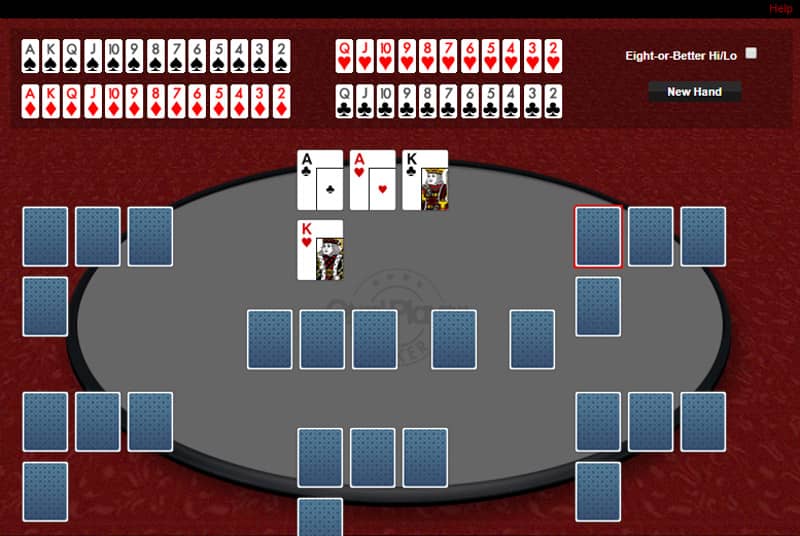
The first piece of PLO strategy you need to learn is how to choose between good and bad starting hands.
What are the best Omaha starting hands, and what principles can you apply to differentiate between these?
Omaha Starting Hands Selection
The first thing to consider when thinking about PLO starting hands is that the number of possible combinations is much bigger than in Hold’em.
In NLHE, there are 1,326 unique starting hand combos, which is nothing when compared to 270,725 possible Omaha poker hands.
With so many different combos, it’s tough for new players to know which hands are playable and which should be avoided at all costs, so good first step would be to grab a poker cheat sheet.
To make matters worse, figuring out a way to categorize hands in PLO isn’t as easy as in Hold’em as well.
To start with, there are three major factors you should consider when looking at your hand:
- Nuttiness – i.e., a hand’s potential to make the nuts
- Connectedness – i.e., how well the cards in hand cooperate
- Suitedness – i.e., potential to make flushes
Nuttiness
The ability to make hands that constitute the nuts, i.e., can’t be beaten by any other possible combo, is one of the most significant considerations in Pot Limit Omaha poker.
Since you need to have two cards working together in PLO, these are primarily starting hands containing suited aces and high cards.
A hand like Ah Jh 8s 9s, for example, has the potential to make the nut flush.
It can make some other combos that will constitute the nuts as well, but when talking about nuttiness, you want to look for the biggest potential a particular hand has.
Connectedness
Omaha poker is often dubbed a flop game because many hands go to the flop and beyond. Unlike Hold’em, where you’ll often be able to win a pot before community cards are dealt, you’ll have to see many more flops in PLO.
Because of this, connectedness is a significant factor in Omaha starting hands.
Ideally, you want to play hands in which all four cards work well together. For example, a hand like 6x 7x 8x 9x is very well connected because it will flop a straight or straight draw on many different boards.
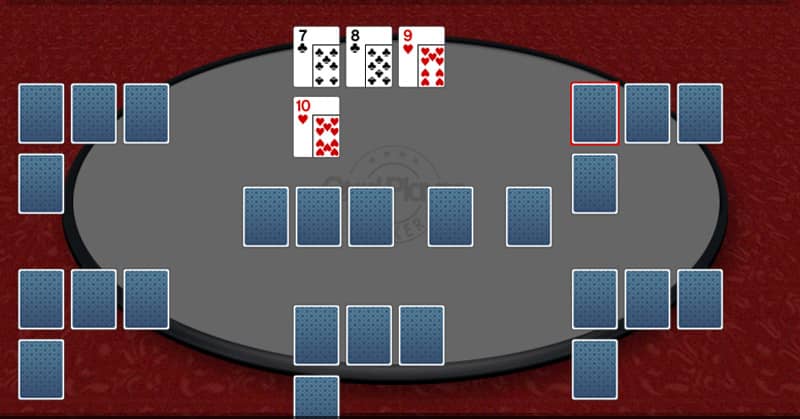
Connectedness isn’t as important as nuttiness, but you want to look at both of these factors together.
A hand like Ah Qx Jx 10h is both well-connected and has excellent nuts potential, which is why a hand such as this would constitute a premium starting hand in PLO.
Suitedness
The third important factor in Omaha starting hands is suitedness, i.e., having suited cards that can make flushes.
It’s important to understand that this is a lower priority in PLO because you don’t want to rely too much on weaker flushes. Hands that contain aces and kings with another suited card are worth considering.
However, as the potential to make the nut flush goes down, so does the playability of a hand.
You don’t want to play too many suited hands that can’t make the nuts because making smaller flushes and sticking to them is likely to cost you a lot of money in the long run.
Playing Pocket Pairs in Pot Limit Omaha
In Hold’em, pocket pairs are quite powerful if you can see the flop cheap and flop a set. It’s not very common to lose with trips in Hold’em, and set-over-set situations are generally considered poker coolers.
In PLO poker, flopping sets aren’t nearly as valuable, especially if you start with a small to medium pocket pair.
This is because set-over-set situations are much more common, and you’ll often end up on the losing side of things if you get involved in a big pot with a bottom set.
If you face a bet, raise, and get re-raised on a dry flop like 5 9 K with no flush draw, your set of 5s will often be behind and in a world of hurt.
Because of this, hands containing small and even medium pocket pairs are best avoided altogether unless they have some other redeeming qualities.
There is almost no reason to ever play a hand like 8 8 Q 5, for example. You’re basically hoping to flop a set of 8s, which will hardly ever remain the best hand by the river if there is any significant action.
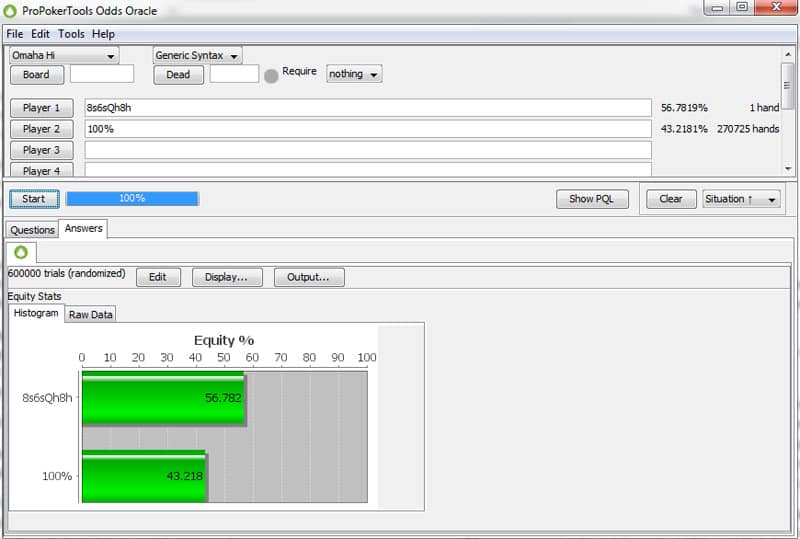
As you can see, such a hand is barely a favorite against the entire range, and there is virtually no player out there who plays 100% of their hands.
Some hands containing small pocket pairs can still be playable, such as As 6s 6h 7h. This hand has other qualities as well, as it can make the nut flush and also has the potential to make some straights.
However, when you do get involved with these hands and end up flopping a set, you need to proceed very carefully and be prepared to let your hand go if there’s a lot of action, as the likelihood of someone having a better hand is quite high.
Best & Worst Omaha Starting Hands
After all this theory talk, you might still be wondering what hands are actual premiums in Pot Limit Omaha, i.e., what hands are must-play.
Although the division isn’t as clear-cut as in Hold’em, for example, there are certain groups of hands that belong to the group of premiums (you want these hands to be double-suited to really count as premiums, although single-suited variations of top holdings are also very strong):
- A A K K
- A A Q Q
- A A J T
- A A J J
- A A X X
- 8 9 T J
- K K Q Q
- K Q J T
- K K A Q
As you can see, these hands fit all the criteria described earlier: they have the potential to make the nuts, are well-connected, and suited if you are lucky.
If they lack connectivity, they make up for it by the fact they contain high pocket pairs.
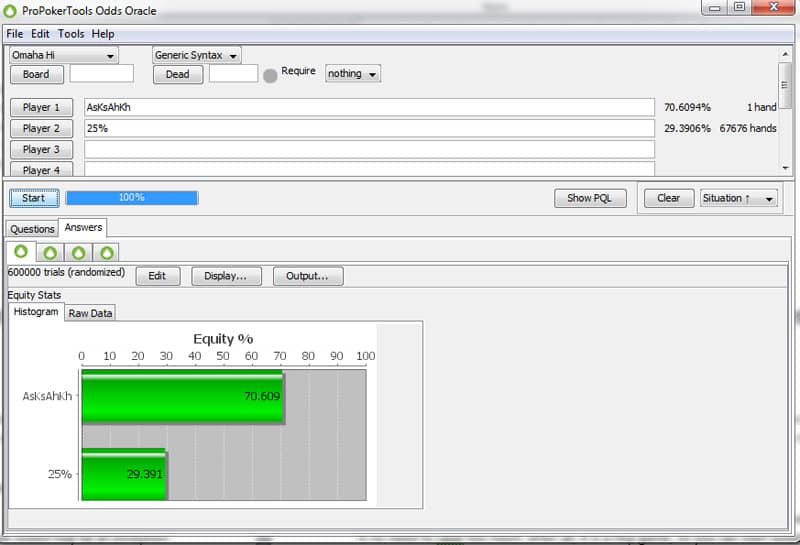
On the other side of the spectrum are the “trash” hands, i.e., hands that you don’t want to play ever, such as:
- Hands containing three or four of the same cards (A A A X single-suited may be an exception but only if you can see the flop cheap)
- Disjointed hands with terrible flop potential (i.e., K 9 7 3, A 10 7 2, etc.)
- Hands containing four of the same suit (as you’re reducing your flush outs)
- Small double-paired hands unless you are playing from the button (i.e., 4 4 6 6)
This isn’t to say that you can never play some of these hands. Pot Limit Omaha can be very situational, and you might find yourself in a position where you can get away with playing more hands.
If you’re just starting, you should be looking to stay out of trouble for the most part and only get involved with the strongest of holdings.
Of course, a majority of the Omaha starting hands will be somewhere in the middle. The decision whether to play these hands will depend on the circumstances – your position at the table, whether you’re the first one in or if there are raises or limps in front of you, etc.
In the next section, this guide will cover some of the aspects of the preflop play, which should help you better understand how and when to get involved in a hand.
Pot Limit Omaha Strategy: Preflop Considerations
It’s finally time to move to the actual Pot Limit Omaha strategy. Recognizing good starting hands and understanding how betting works in PLO poker is essential, but it’s just the start.
What do you do with those PLO rules, and how do you build an effective strategy that works?
The first thing you need to understand about Omaha starting hands is that equities run much closer.
You’ll never be in a situation where you’ll have a hand that’s miles ahead of your opponent. Even the best starting hands will have only 60% to 70% advantage, so you’ll want to be careful about building huge pots before the flop.
Of course, you can still go ahead and play for stacks with most double suited aces combos, but you don’t need to go crazy with most of your hands, especially if you are deep.
Positional Awareness
Pot Limit Omaha is a positional game, much more so than Hold’em. So, when thinking about your actions, you need to factor in your position. While having strong starting holdings helps, you should try to play as many hands in position as you possibly can.
This means that, as you get closer to the button, you can start expanding your starting hands’ range. In general, you’ll rather play a decent hand from the button than one of the weaker premium hands when you’re under the gun.
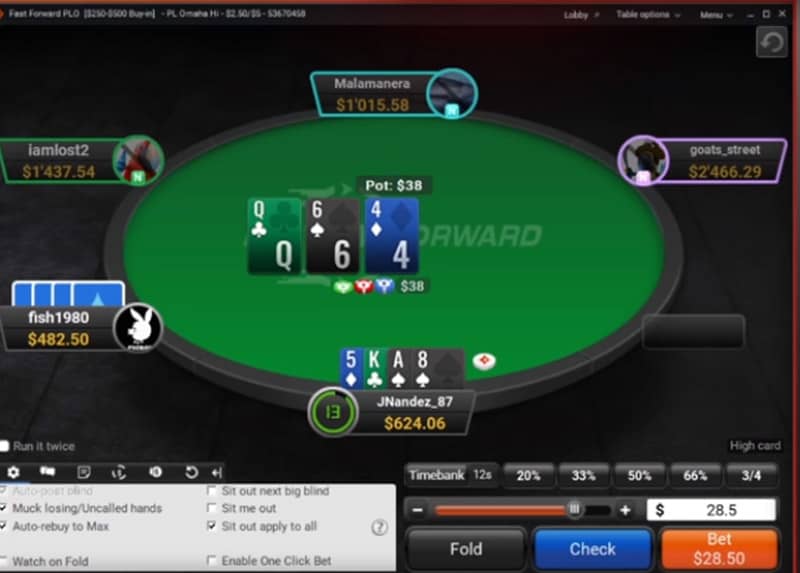
Since you’ll have to play many flops, turns, and rivers, it helps if you are the one to have the last say on every betting street.
Aggressive vs. Passive Actions
Because Omaha starting hand equities run so close, new players are often of the mindset that there is no need to raise too much. After all, it is a flop game, so you can start building the pot once the flop is out.
It is true to some extent, but you shouldn’t take it to the extreme.
If you’re the first one into the pot, you should generally be looking to raise or fold. You don’t want to be limping in first in almost ever.
One exception to this would be when you’re looking to trap and 3-bet someone’s isolation raise, but I wouldn’t recommend it for new players. If you’re only going to do this with a few premium hands, your more experienced opponents will have no problems adjusting to your strategy.
When there is already a raise and a couple of calls in front of you, you can consider calling to see the flop, especially in a late position such as the button or cutoff.
3-betting often won’t achieve the desired effect of thinning the field, so you don’t have much incentive to do it even with stronger hands.
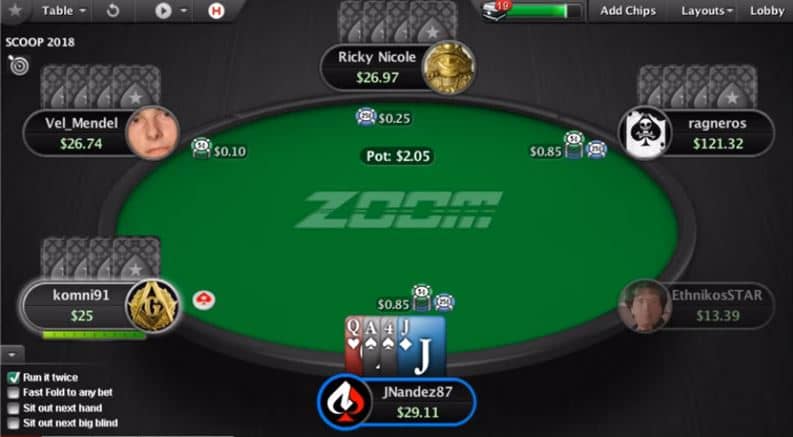
This isn’t to say that you should never 3-bet before the flop with solid hands since you want to build the pot and squeeze out some of the players.
With all that in mind, you don’t have to worry too much about balancing when starting out.
It’s fine to play pretty straightforward on the lower stakes because your opponents likely won’t be as observant. As you get more comfortable and develop a deeper understanding of the game, you’ll be able to take things to the next level and improve your play using some more advanced resources.
Stay Patient
Although it may seem like excessive advice, it’s a crucial one for new PLO players.
Despite all the tips and all the Pot Limit Omaha strategy guidelines, you might get bored after being card-dead for a while.
An easy trap to fall into is to start playing “okay” hands. Don’t do it!
Unlike Hold’em, PLO may give you this illusion that certain weak hands are okay to play. You can’t just sit there and do nothing while everyone else seems to be involved in every pot, right?
Wrong! You need to stay patient and avoid weak hands and playing from wrong positions like a plague. This is the fastest way to bust town there is.
PLO Poker Strategy Tips: Postflop
All the strategy and advice up to this point are geared to help make things easier once the flop is out.
PLO poker is all about those community cards, and your choices before the flop need to be such that you put yourself in the best spot postflop.
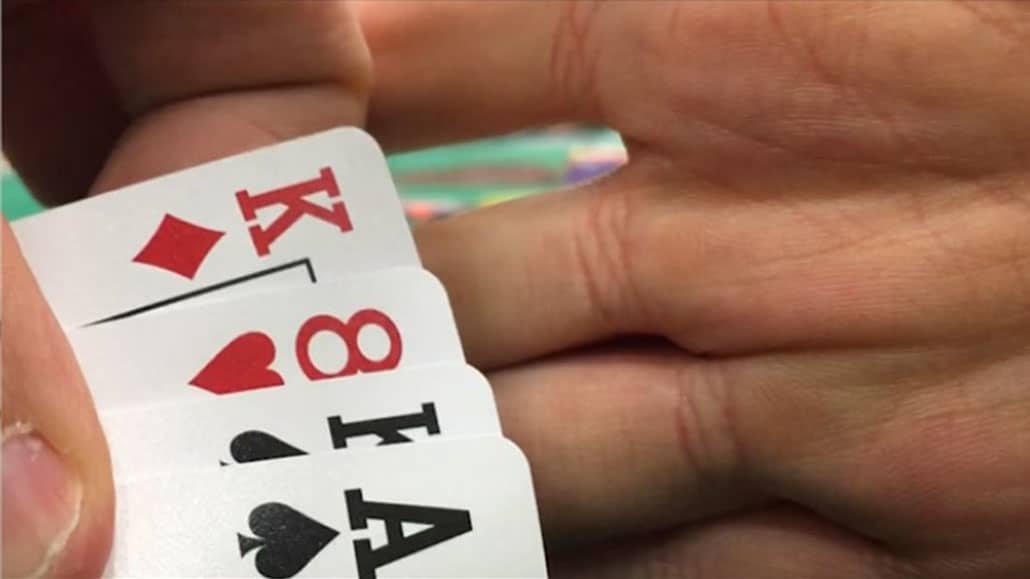
If you adhere to suggestions from previous sections, you’ll have several things going for you:
- You’ll be getting involved only with hands that have a good potential
- You’ll be playing most of your hands in position
- You won’t find yourself in huge pots with mediocre holdings
All of these things are important. You don’t want to make your life more complicated than it needs to be. Pot Limit Omaha is a complex game as it is so you don’t need to make those decisions even harder by getting involved with hands that are bound to put you in tough spots.
With all that in mind, here are some of the main things to consider after the flop.
C-betting in PLO Poker
A continuation bet is standard in Hold’em. Once the flop is out, the original raiser will quite frequently take a stab at it and try to win the pot right then and there, especially against a single opponent.
Given the fact that it’s hard to connect with the board in NLHE, this aggression alone will win them the pot quite frequently.
In PLO, c-bet isn’t nearly as effective as in Texas Holdem.
Because there are so many possible combos, players will often connect to the flop in some way, shape, or form. This means that a single bet on the flop won’t make them go away that often.
So, you’ll want to reduce your c-bet percentage. Firing away with no equity is usually not a good idea and will reduce your EV.
If you completely whiff the flop in PLO, you can check and look to give up. Of course, if you have an opponent that will only continue with made hands, you can still fire away with air, but for this, you’ll need to have a solid read.
Playing Draws
Those learning how to play Omaha often have problems with playing draws. In PLO, you’ll often flop a draw instead of a made hand. Thus, you’ll need to navigate your way through various flops and turns and make decisions about calling or folding based on the future value of your hand.
This is a vast topic on its own, but some simple guidelines should help you stay out of trouble at the beginning.
The biggest advice is to avoid drawing to any non-nut draws.
New players will often call big bets and even commit their entire stacks drawing to the second or third nut flush, for example.
The problem is, when you do make your hand in a significant pot, you’ll often end up losing just because the person driving the action was actually drawing to the nuts.
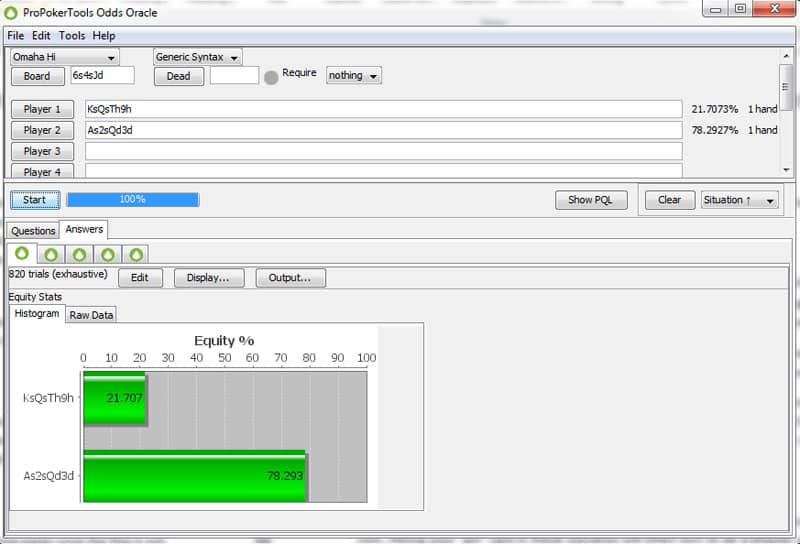
The same applies to straight draws. Don’t get an overly involved drawing to a straight that’s not the nuts, and you can completely forget your gutshot straight draws as well.
Hitting your “gin” card in these scenarios will often turn to be a disaster as someone else will show up with a bigger straight, and you’ll realize that you had no shot at winning the hand whatsoever.
Protect Your Hands
Made hands in PLO are susceptible. You can have the nuts on the flop, but your opponents may have many potential outs to outdraw you, so you need to play fast when you know you’re ahead.
There is no reason to be afraid of building the pot when you’re confident you’re ahead. You want the other player(s) to pay as much as possible to draw out on you.
Playing passive in hopes your hand holds up to the river is a wrong approach that will cost you money in the long run.
For example, if you have the nut flush, make sure you put in as much money as you can into the pot. Don’t let the other player dictate the price and make their full house on the turn or the river.
Forget About “Trapping”
This advice ties in with the one on protecting your hands. In Hold’em, strong made hands aren’t likely to get outdrawn. In poker PLO games, this will happen quite a bit, so trying to “trap” your opponents will backfire a lot.
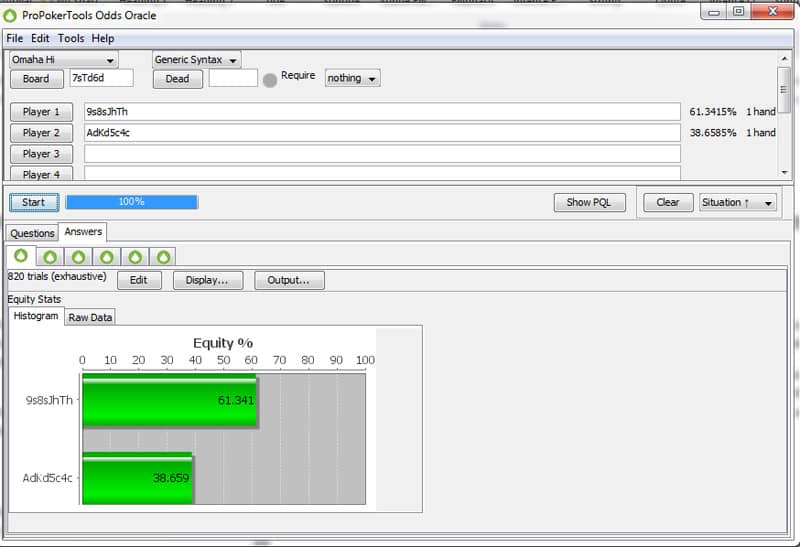
If they hit their card, they’ll just win a big pot. If they miss, most players won’t give you a single extra penny.
So, try to take a more straightforward approach and don’t worry too much about announcing big hands with big bets. Plenty of players will still make mathematical mistakes of calling when they shouldn’t, which is all you need to make money playing PLO poker.
Account for the Blockers
In poker, blockers are the cards that reduce or altogether remove the possibility of a player having a certain combination.
The best example of blockers in PLO is when you have a single ace of the flush suit. While you don’t have the flush, you also know that your opponent can’t possibly have the nut flush because you’re holding the key card.
This knowledge can come handy in many different spots.
You can use blockers to bluff a player off their hand or pick off their bluffs when you know they’re representing a hand they can’t possibly have.
It will take some time to get good with this, and you won’t always make perfect decisions but try to always consider any potential blockers when playing big pots.
PLO Poker Strategy: Final Thoughts
Learning how to play Omaha well isn’t something you can do by reading a single article, no matter how long.
PLO is a complex game that requires a deep understanding of board textures, pot odds, opponents’ tendencies, and much more.
The goal of this article was to teach you some basic Pot Limit Omaha strategy and help you get started. Many poker tips for beginners are valid for PLO as well, so you can take a look at that article to build better fundamentals as well.
Once you get involved in Pot Limit Omaha games and start accumulating some experience, many of the things discussed here will make much more sense.
Try to take things one step at the time and don’t get frustrated over mistakes you’re likely to make during your first attempts at PLO poker. They’re going to happen, and you should learn from them to become a better player.








